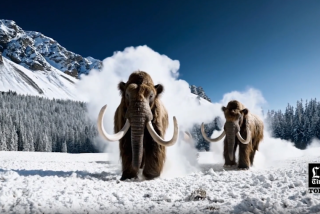Liquor sales slump -- with the exception of whiskey
As the economy turns down, Americans are cutting back on their liquor -- with a major exception: whiskey.
Sales of bourbons such as Jack Daniels and Maker’s Mark are bucking a slump in demand for distilled spirits that set in during the final months of last year, according to industry officials.
It’s not clear whether in hard economic times drinkers are looking for comfort in Jack Daniels or whether Americans long enamored with vodka, rum and tequila have rediscovered one of the nation’s oldest spirits. George Washington had a working still at Mount Vernon.
The Distilled Spirits Council of the United States said Friday that whiskey sales rose 4.3% by dollar value and 1.3% by volume in 2008.
And in a trend contrary to other segments of the alcoholic beverage industry, the expensive stuff, or super premium whiskey, logged the hottest growth. In other areas of the market, consumers are trading down to less expensive brands, analysts report.
Nielsen Co., which tracks sales of liquor in supermarkets, drug and convenience stores, noted that whiskey was one of the few spirits to actually grow by volume during the holiday period and into the first part of January.
“The growth is coming from bourbons, and the premiums -- $16 to $25 a bottle -- are growing pretty well, about 4% by volume in the latest 13 weeks. That was up only marginally in the same period a year ago,” said Danny Brager, Nielsen’s alcohol expert.
And the growth comes as the rest of the liquor market is slowing, he said.
“People revert to some of the basics and more traditional choices when things get tough. Some of the trendier drinks are having a tough time, but what’s more traditional than a bourbon and coke or Manhattan? They fit the bill for what people are looking for,” Brager said.
Nielsen surveyed bar managers last year and asked about bourbon, a type of whiskey with grain alcohol derived mostly from corn.
“They told us that some of their customers are burned out on vodka, and others said that bourbon was a timeless drink and very mixable,” Brager said.
Overall, U.S. liquor sales rose 2.8% to $18.7 billion at the producer level last year, the Distilled Spirits Council reported.
The numbers reflect sales by distillers to distributors rather than total retail sales. Volume grew by a slower 1.6%, hurt by the downturn at the end of the year.
Although the industry logged a gain, it was well below the 4.6% the industry association had predicted and less than half the 5.8% growth rate of 2007.
The liquor business turned downright sour in the fourth quarter of 2008.
“What we don’t know yet is by how much,” said Peter Cressy, chief executive of the trade group.
Sales of liquor in restaurants and bars tumbled 2.2% last year and probably have fallen by even more in recent months, Cressy said.
“We did not get the holiday boost we would have liked to get,” Cressy said.
Cressy declined to make a prediction on what alcohol sales to restaurants and retailers will do this year because of the severity of the recession.
However, he expects that American whiskey will remain a bright spot, helped by its popularity both at home and overseas.
“Bourbon and Tennessee whiskey,” he said, “are unique and historic products of the United States that are capturing worldwide attention and acclaim.”
--







